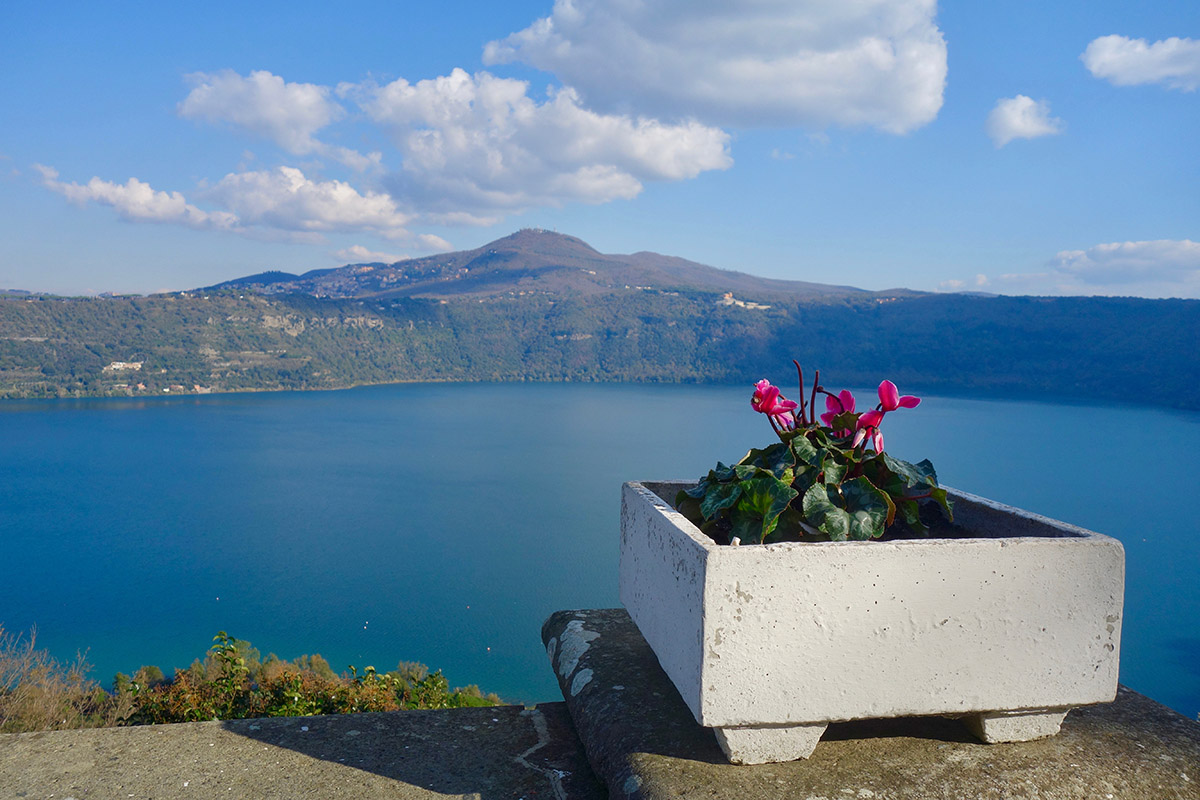The Explosive Geology Around the City of Rome
Posted on Categories Discover Magazine

The city of Rome has been around for a long time. According to legend, it was founded over 2,700 years ago and became the most powerful city in the Western world. Volcanic materials are integral to many of the structures, both as building stone and a key ingredient to the remarkably durable Roman concrete. It is no coincidence that Rome is surrounded by volcanic features, some of which have produced cataclysmic eruptions over the past 500,000 years. Welcome to the Roman Magmatic Province.
Rome itself, astride the Tiber River, is flanked by two volcanic calderas. To the south sits Colli Albani while on the city’s north side sits Sabatini. As you trek further north, you reach more calderas, including Vico and Vulsini. Being calderas, they lack that distinctive volcanic shape people picture when they hear the word “volcano”. These don’t look like Vesuvius as it towers over Naples today. Instead, they are subdued features that hide their explosive nature.
Landsat 9 image of the Roman Magmatic Province, with Vulsini, Vico, Sabatini and Colli Albani (north to south). Credit: USGS, annotated by Erik Klemetti
Most people will think of Etna, Vesuvius and Stromboli when Italian volcanoes are mentioned. Although they are the most active (along with the Campi Flegrei), they are not the only potentially active volcanoes in the country. Vesuvius and company are part of the Campania Magmatic Province while Etna belongs to the Sicily Magmatic Province and Stromboli to yet another, the Aeolian Arc Magmatic Province.
All of this is thanks to the complicated tectonics of Italy, where Africa is subducting underneath Europe, albeit in one of the strangest subduction geometries on the planet. Most of the magmatism is linked to the weak melting happening thanks to the African Plate diving under Europe, but some of the magma doesn’t really match what we expect from that tectonic setting. Without getting too lost in the weeds, Italian magmatism is complex to say the least.
Italian Magmatic Provinces. Credit: Peccerillo (2005).
Back to Rome! Over the last 150,000 years, volcanism has been moving south. Vulsini, the northernmost caldera last erupted ~111,000 years ago. Move south to Vico and that number is 95,000 years ago. At Sabatini, we’re down to 70,000 years ago. Finally, at the Colli Albani, the most recent verified activity was 36,000 years ago.
Now, that might seem like a long time ago, but geologically, those dates aren’t particularly old. Most people would agree that Vulsini and Vico seem pretty moribund now. However, when they were active they were really active. Vulsini produced multiple caldera-forming eruptions between ~300,000 and 160,000 years ago while Vico had no less than four massive ignimbrite (surface-mantling explosive eruption) from ~250,000 to 144,000 years ago.
Progression of ages for most recent volcanism in the Roman Magmatic Province. Credit: Marra and others (2020).
Heading south, we hit the gates to Rome: Sabatini and Colli Albani. Sabatini isn’t as much a volcano as a volcanic region, with plentiful explosive eruptions and ~100 cubic km of flood lavas. Although Sabatini has been quiet for 70,000 years, a study by Marra and others in 2020 says that we shouldn’t count out Sabatini as it has had periods between eruptions as long as this. On top of that, an area to the east of Sabatini has been experiencing uplift for at least the past 125,000 years.
Montefiascone caldera in Italy, part of Vulsini. Credit: Wikimedia Commons
However, if Sabatini is still active, it is just barely so. The Colli Albani is a different story. Between 600,000 and 200,000 years ago, the Colli Albani erupted almost 300 cubic kilometers of volcanic ash and debris over the course of several massive explosive events. This activity ended up producing a 10 by 12 kilometer caldera that has seen smaller eruptions within the caldera lake, most recently around 36,000 years ago. Although no activity can be verified since then, the area does still experience earthquake swarms occasionally.
It might be hard to imagine that Rome is flanked by such powerful volcanoes. In the unlikely event that another massive explosive eruption happens, there are currently over 5 million people living within 100 kilometers of Colli Albani. Insert your own quip about a volcanic sacking of Rome here.
Overall, it does appear that the focus of volcanism in the “boot” of Italy has migrated even further south, to the region around Naples. Vesuvius and Campi Flegrei are clear and present volcanic dangers for Italy, but one must not forget the fairly recent volcanic history around the country’s capital. Volcanism and the history of Italy are tightly intertwined, sometimes with ramifications that could impact the whole of Europe.